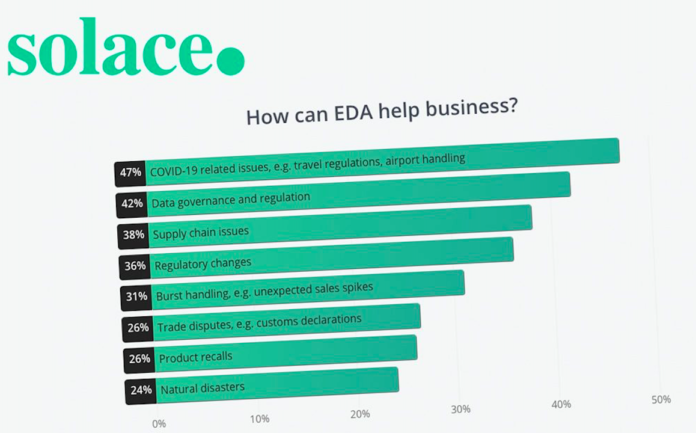About one in every 12 (85%) of organisations worldwide recognize the critical business value in adopting enterprise-driven architecture or EDA even as adoption is still in the early days, with only 13% claiming to have achieved full EDA maturity.
This was revealed through a study commissioned by Solace and led by independent research firm Coleman Parkes, which surveyed 840 respondents on in roles ranging from C-Suite to IT architecture.
Findings show that the IT department is bought in, but more work needs to be done with business leadership
The top priorities for EDA implementation were improving application responsiveness (46%), improving customer experiences (44%), and responding to events and changes in real-time (43%).
Overall, 71% of businesses see the benefits of EDA outweighing the costs, or at least equaling them. This is partly driven by what businesses stand to lose by failure to invest in real-time data capabilities.
With a lack of EDA, businesses are most concerned with decision-making based on inconsistent and out of data information (46%), prevention of rapid response to threats and opportunities (45%), and hindered ability to innovate (44%).
“The appetite for real-time data sharing as a means of coping with constantly changing landscapes is increasing. Businesses are under unprecedented pressure, with shifting customer demands pushing them into adapting and innovating,” said Mychelle Mollot, CMO of Solace.
“For many, a business model underpinned by event-driven architecture has already proven its value, the benefits by far outweigh the costs, and they are on the way to implementing EDA across a variety of use cases,” added Mollot.
For those still on the journey, they face a number of obstacles such as a lack of adequate technology as a key roadblock to EDA (75%), not having yet identified the right tools and vendors to meet their needs (59%), and a lack of education on the benefits (38%) or talent to execute implementation (37%).
For EDA to succeed, the survey found that organisations need greater buy-in at the business leadership level. On the IT side, 61% already appreciate the value of real-time event-driven data distribution, pointing at an appetite for EDA.
However, this number drops off to just 35% when looking at business roles, where decision makers might have a harder time reconciling how the bottom line can benefit from EDA.
















